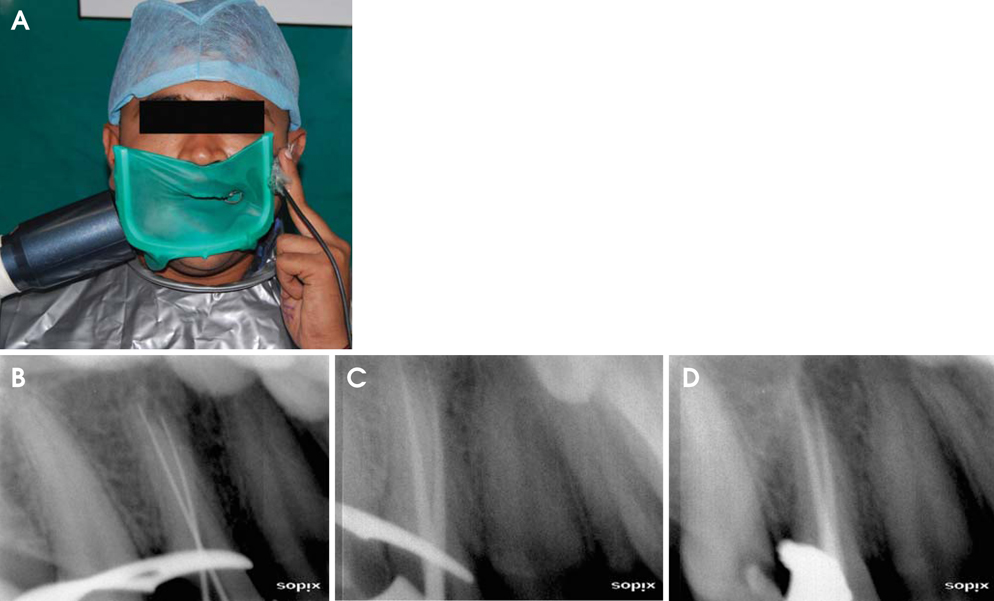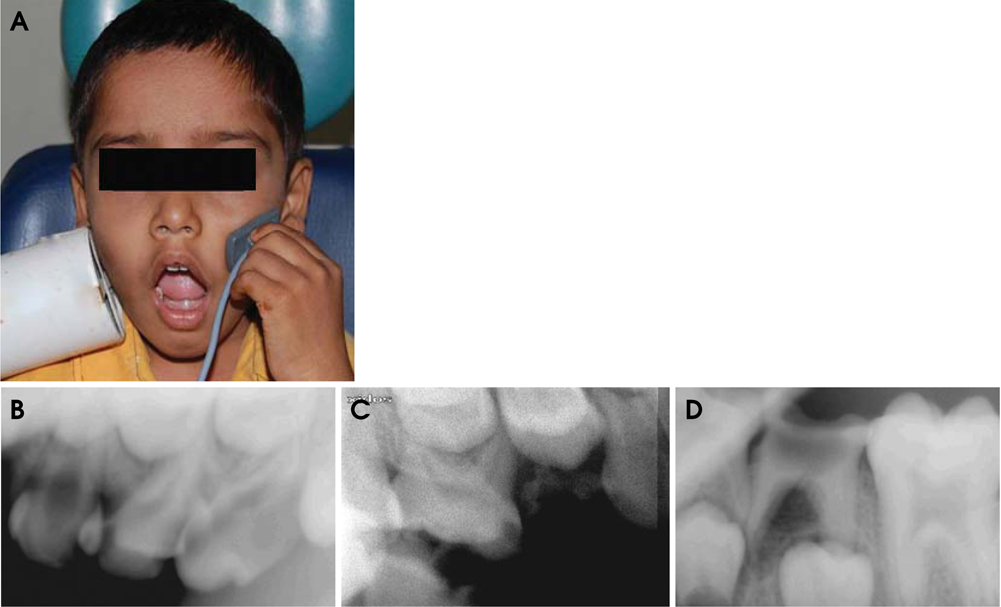Imaging Sci Dent.
2011 Dec;41(4):161-165. 10.5624/isd.2011.41.4.161.
Extraoral periapical radiography: an alternative approach to intraoral periapical radiography
- Affiliations
-
- 1Department of Conservative Dentistry and Endodontics, Vasantdada Patil Dental College and Hospital, Sangli, India. dr.rahul1982@gmail.com
- 2Department of Oral Medicine, Diagnosis and Radiology, CSMSS Dental College and Hospital, Aurangabad, India.
- 3Department of Pedodontics, Saveetha Dental College and Hospital, Chennai, India.
- KMID: 2167401
- DOI: http://doi.org/10.5624/isd.2011.41.4.161
Abstract
- It is difficult to take intraoral radiographs in some patients who are intolerable to place the film in their mouth. For these patients, Newman and Friedman recommended a new technique of extraoral film placement. Here we report various cases that diagnostic imaging was performed in patients using the extraoral periapical technique. This technique was used to obtain the radiographs for the patients with severe gag reflex, pediatric dental patients, and patients with restricted mouth opening. This technique can be recommended as an alternative to conventional intraoral periapical technique in cases where intraoral film placement is difficult to achieve.
Keyword
MeSH Terms
Figure
Reference
-
1. Whaites E. Periapical radiography. Essentials of dental radiography and radiology. 2002. 3rd ed. Edinburgh: Churchill Livingstone;92.2. Parks ET, Williamson GF. Digital radiography: an overview. J Contemp Dent Pract. 2002. 3:23–39.
Article3. Newman ME, Friedman S. Extraoral radiographic technique: an alternative approach. J Endod. 2003. 29:419–421.
Article4. Chen CH, Lin SH, Chiu HL, Lin YJ, Chen YK, Lin LM. An aiming device for an extraoral radiographic technique. J Endod. 2007. 33:758–760.
Article5. Fisher D. Extraoral radiographic technique for third molars. Aust Dent J. 1974. 19:306–307.
Article
- Full Text Links
- Actions
-
Cited
- CITED
-
- Close
- Share
- Similar articles
-
- Evaluation of alveolar bone density by intraoral periapical radiography
- Radiography Work Performed by Dental Hygienists according to the Workplace Type
- Absorbed and effective dose for periapical radiography using portable and wall type dental X-ray machines
- Absorbed and effective dose from periapical radiography by portable intraoral x-ray machine
- Comparison of digital radiometric featuresbetween radicular cysts and periapical granulomas






